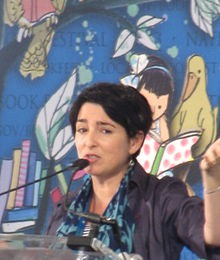Book 5: Fear in the Sunlight
by Nicola Upson
At least I’m getting this one out before the next one arrives.
This is probably the only novel I’ve read where the author bases two of her protagonists on real people. Nicola Upson has a fascination with Elizabeth MacKintosh’s, pseudonym Josephine Tey, mysteries. She also likes Alfred Hitchock’s work, although she paints him as exceedingly arrogant, but adores his wife. Being familiar with Hitchcok’s early films before he left Britain would probably help in some areas, and knowing Tey’s books would help in others. In addition the reader needs a family tree to keep all of the characters straight. Like Agatha Christie, she throws in too large a cast, but unlike Christie, she gives out enough information to close in on the real culprit by the middle of the book. I knew who did it, but not all the reasons for why until the ending.
As a Hitchcock aficionado, Nancy would enjoy this one for sure. Fear in the Sunlight is used as a phrase by one of the characters to cover what everyone is feeling. The detective we like and rely on has to step aside for the local constable because he is out of his jurisdiction. He knows the locals have come to the wrong conclusion.
There are a few threads that just don’t work as far as the relationships are concerned. For example, a brother and sister from the same town take up acting careers under different stage names. But no one in their home town where much of the story takes place makes the connection even though they were in their twenties when they left. Another family relationship also gets stretched to improbable limits, but in the end it does all tie together.
To truly appreciate Upson, I should probably read the key Tey mysteries and watch the early Hitchcock films I don’t know. Otherwise, it was a challenging reading pleasure.
In the meantime, I did finish Greta Christina’s book, but not my review for Mo. (I’m on Chapter 11 and will need to go back for a refresher. to write the next part.) I also read Elizabeth Warren’s new one which I got for Mother’s Day, but I’m anxiously awaiting June.
